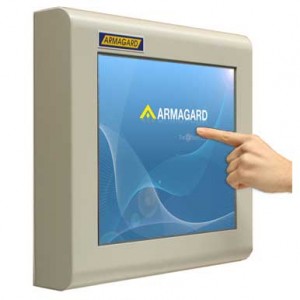Since the rise of the tablet PC, touch screens have become increasingly common. A recent report suggests that by 2015, half of all computers purchased for children will implement touch screen rather than keyboard. Touch screens with, therefore, be as familiar to the next generation of computer users, as keyboards are for today’s computer users.
With an increase in use of touch screens in computing, some people are predicting an end to the traditional keyboard, so touch look set to replace the keyboard.
The great advantage to using touch screens is that you don’t need a separate input and output device, which is the main reason table computers have become so successful, the display, keyboard and PC are all packaged in a handy slim line system.
Despite their growing popularity and advantages over keyboards, touch screens do have some drawbacks. Firstly, they offer very little feel for those that type, namely writers; however, a similar argument was made against the computer keyboard when people began moving from typewriters to PCs, and we know what happened to the typewriter.

But touch screens do have other drawbacks too. Touch screens are unresponsive to gloved hands, making their use impractical for certain industrial applications. Dusty, damp or dirty environments also cause problems for touch screens, as dirt and debris lead to false inputs.
However, different touch screens use multiple technologies to achieve the same results and each method has advantages and disadvantages, which may or may not make them suitable for differing environments.
Resistive touch screens are the most versatile, as they consist of a glass plate covered with both a conductive and a resistive metallic layers; this is the type of technology most tablet computers employ. Resistive touch screens, however, are susceptible to interference from debris and dirt so are not suitable for most industrial applications.
Capacitive touch screens, on the other hand, store electrical charges on the glass panel face, transferring to the user when touched, making them more resistant to contaminants, which makes them an ideal solution industrial applications.
Comments are closed.